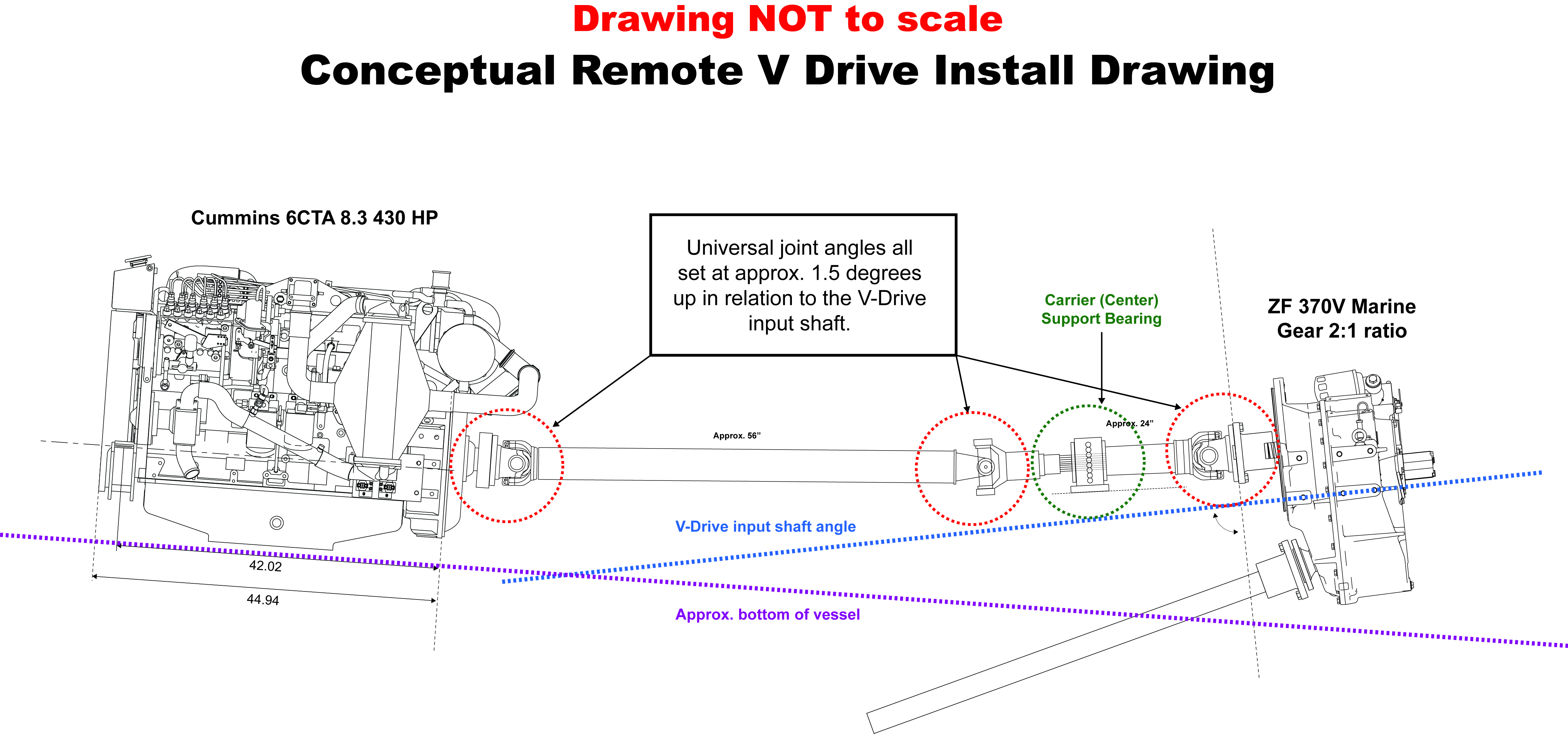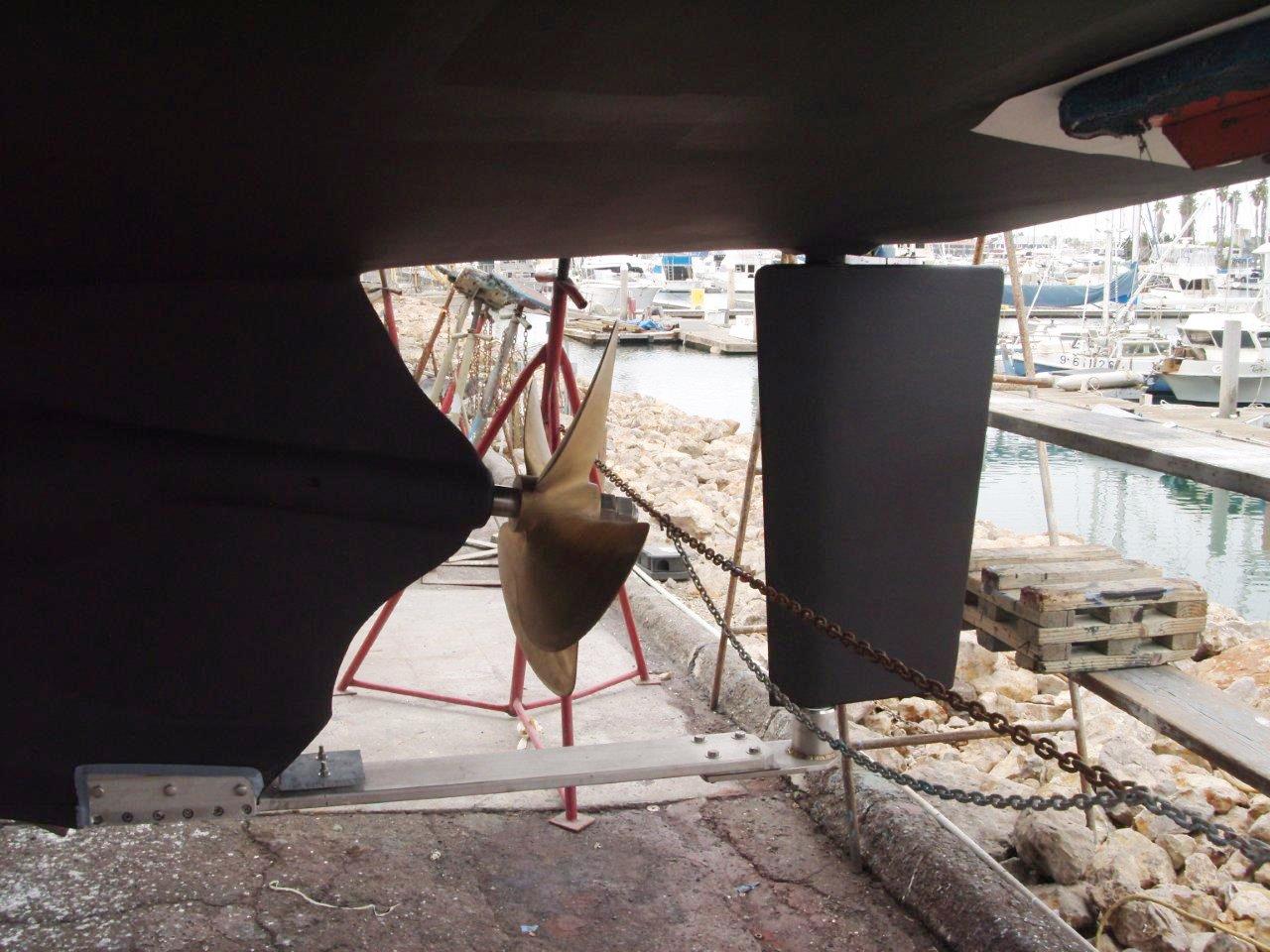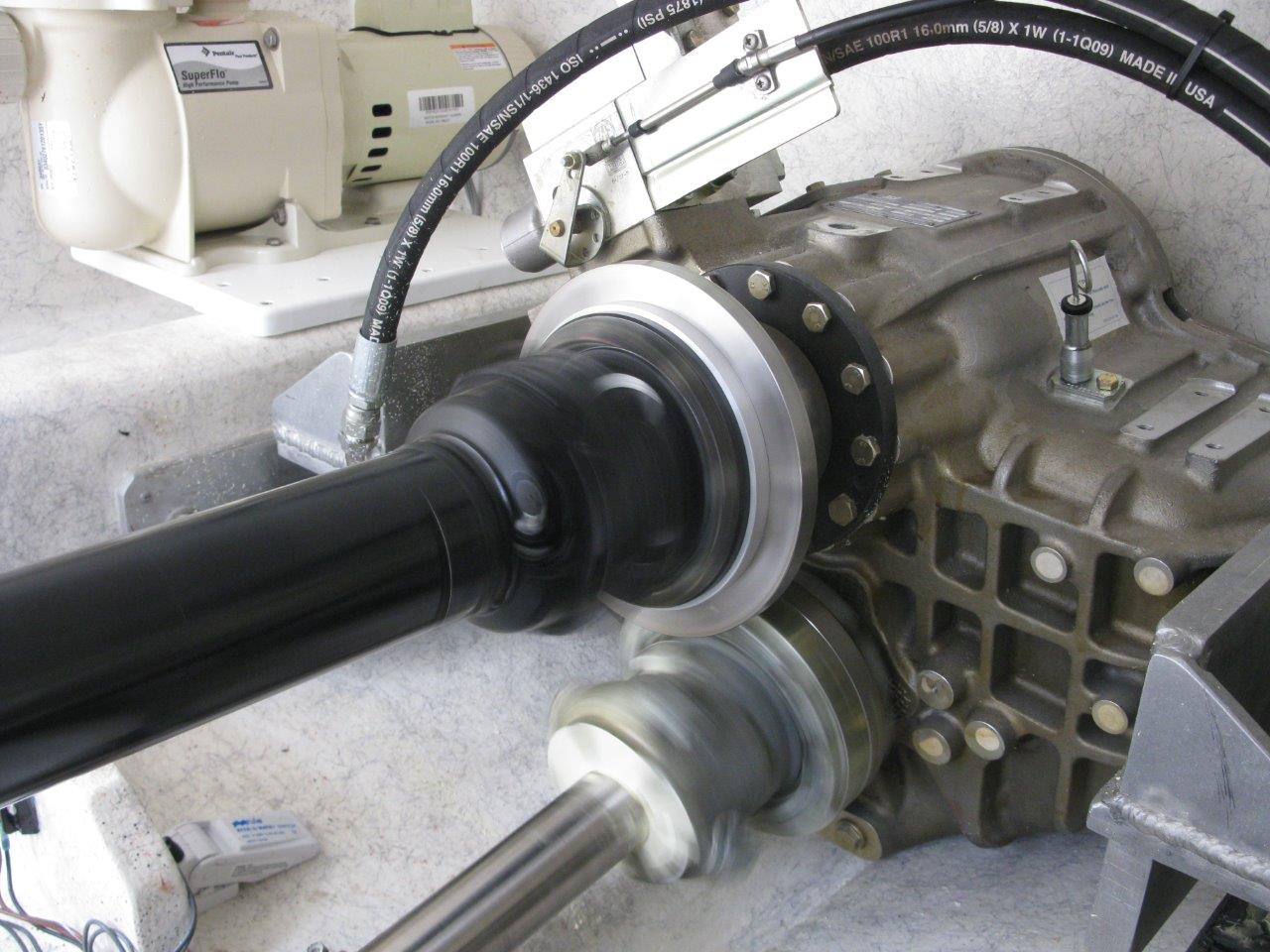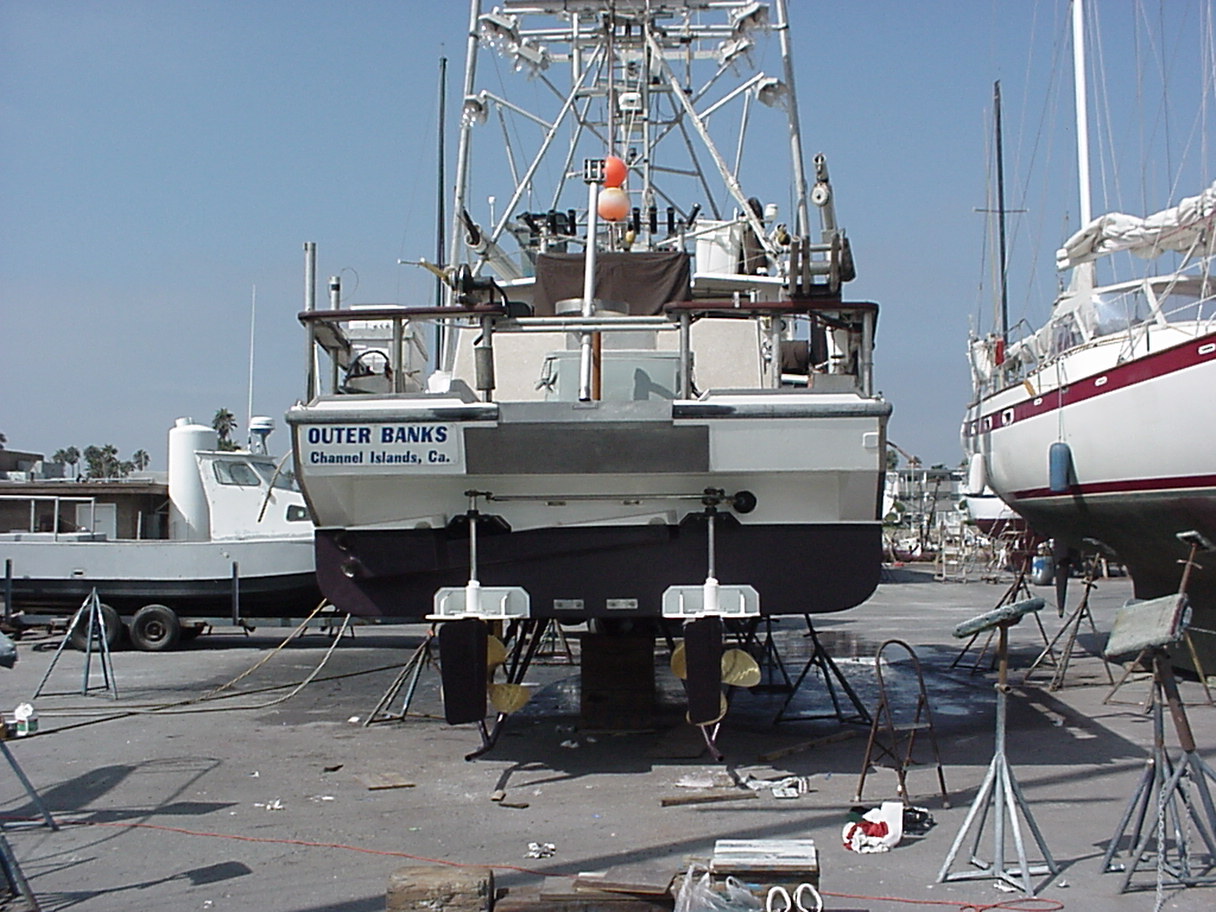Most any smaller vessel (maybe under 80 ft or so) that uses a “V-drive” can really shine when the total layout of the boat is beneficial in accomplishing the five main design features listed below. Add the word “REMOTE” to the equation, and now this system can even be more beneficial in some cases. Keep reading…
1) The trim or balance of the boat
In both laden and unladen modes can be controlled much better – in other words, using the fixed weights that are part of the boat (cabin structure and engine / mechanical components) to balance the variable weights in the boat. With a REMOTE V-drive, one can move these weights farther or closer to the C.G. so that balance can be achieved without adding unused fuel or other weight (unused ballast) for balance.
What are FIXED weights?
Hull and cabin structure, engines, drive trains and other needed mechanical equipment from batteries to anchor gear to electronics and electric & hydraulic needs… pipes, hoses, pumps, pullers, reels, tools, “creature comforts” etc. etc. These are the things that you need to have to operate the boat in a way that allows you to do what you want to accomplish.
What are VARIABLE weights?
Really, there are only three major variable weights in a boat, but they can be BIG in relation to the total weight of the boat… FUEL, FISH & WATER.
2) The layout of the boat
So that all the space you have is utilized in the best way – in other words, wasted space or utilized space??? Find me a boat that has too much space! Do you have the room you need for fuel, fish, water, and everything else? Or could one engine powertrain “arrangement” work much better than another??? Things like access to your mechanical components must be part of the decision – how important is to be able to perform engine & mechanical maintenance with lots of things going on besides just an engine – Hydraulics, refrigeration, generator, steering, pumps, etc. etc. How important is it to use the engine’s “base heat” and air use to keep all of these expensive mechanical parts DRY? Ever really looked at most boats lazarette compartments after a few years of real use when the steering systems and/or generator have been stuffed in them for 3-5 years? Or maybe the engine room when access makes you bleed each time you go down there? Many installations are done to where it’s “No Fun” to even take a look.
3) Sound
How tiring it can be listening to 300-600HP+ under your feet all day?? Moving all that NOISE to the back of the boat will allow you to concentrate of your trip, and not your ears.
4) Vibration
With a REMOTE mounted V-drive, the engine can be on very soft isolation mounts – You could say “springs“ if you like… All the mounts have to do is hold the engine safely in place… No thrust to worry about. No super accurate FEELER GAUGE alignment to worry about… All this adds up to a noticeably smoother running boat and a less tiring trip after a long day running.
5) Location of the engine
With a remote V-drive, the actual location of the engine is quite flexible . Right up near the stern or a few feet ahead of the stern or closer to mid-ship are always a part of the mix. As always, it comes down to planning the best layout for your engine room mixed in the overall balance of the boat under all conditions. Full of fuel, light on fuel, full of water and fish, or no fish and no water – Or, some combination of those “variable weights”… You just do not have those options with a conventional drive train.
Some pictures below showing two “proven examples” of why V-drives and especially “remote V-drive” systems are my preferred power train design of choice for both heavy duty commercial and recreational projects when overall vessel layout and balance is key to the project…





























